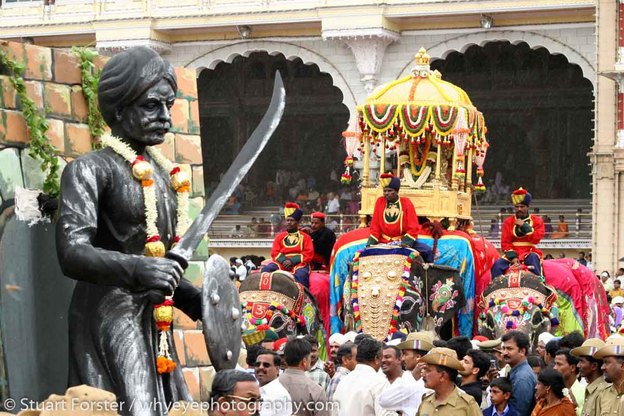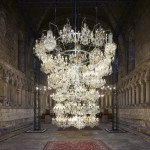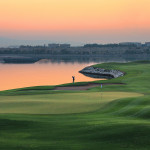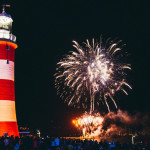Stuart Forster visits the Mysore Dasara Festival in Southern India
Even on normal days the palaces and colourful markets of Mysore, in southern India, tend to make a big impression on visiting travellers. During the ten-day Mysore Dasara festival caparisoned elephants, tribal dancers and traditional musicians are just a handful of the photogenic sights that make the city—which lies roughly 90 miles south-west of Bangalore, Karnataka’s capital—a must-visit destination for travellers interested in cultural heritage.
The final day of the Mysore Dasara is the busiest of the year in Mysore. The city is the home to nearly 900,000 people, but more than a million converge on Mysore’s streets to view the Vijayadashami procession. People pack balconies and rooftops.
They clamber up onto railings and cling on to take advantage of their hard-won elevated perspective. Locals stand shoulder to shoulder with visitors, lining pavements to grab a glimpse of the annual elephant-led procession.
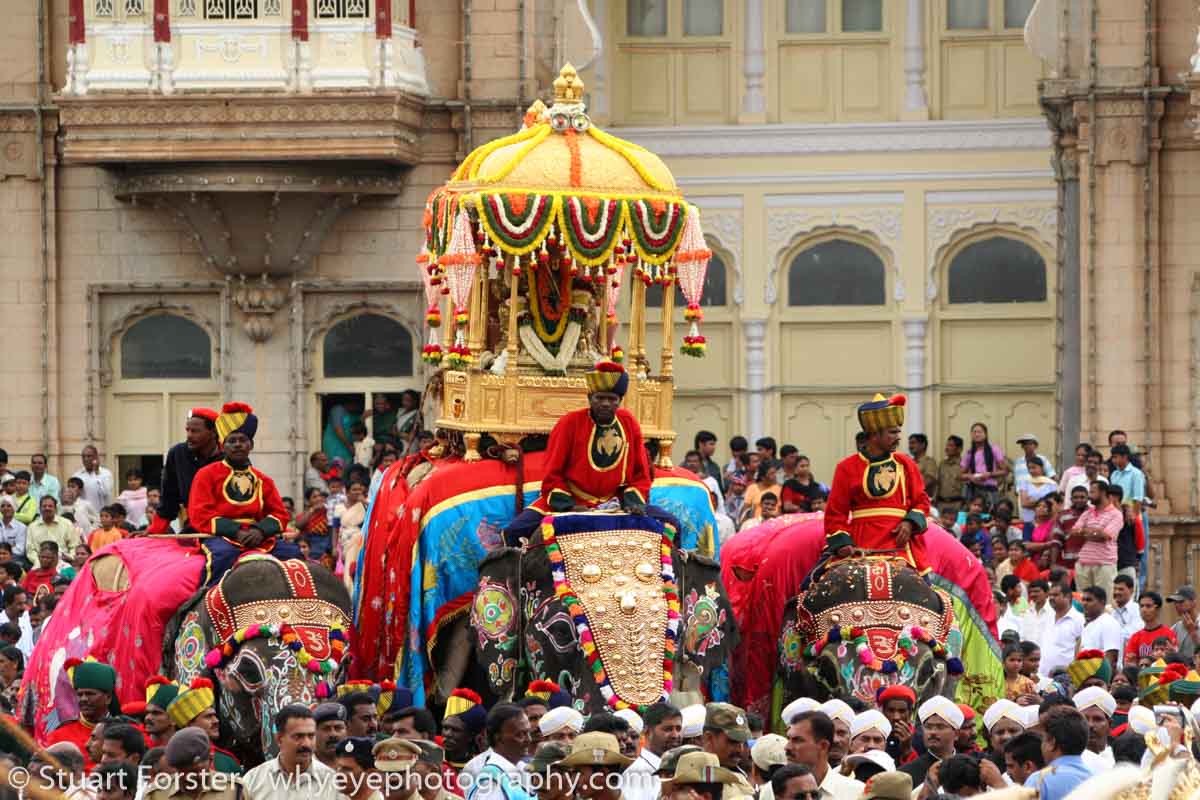
Silk clad elephants plod through the streets with painted foreheads and brass ornamentation on their tusks. As a consequence, the procession is alternatively known as the Jumboo Savari.
Always held during the autumn, the date of the Vijayadashami procession tends to change year on year. The reason is simple. Hindus use a lunar calendar to calculate the date of festivals. In 2016 the event takes place on 11 October.
Shortly after noon, the magnificent parade ambles out of the ornate main gates of Amba Vilas Palace, in the heart of Mysore Dasara, snaking through the city’s busy streets. The event is the apex of a festival which symbolises the victory of good over evil.
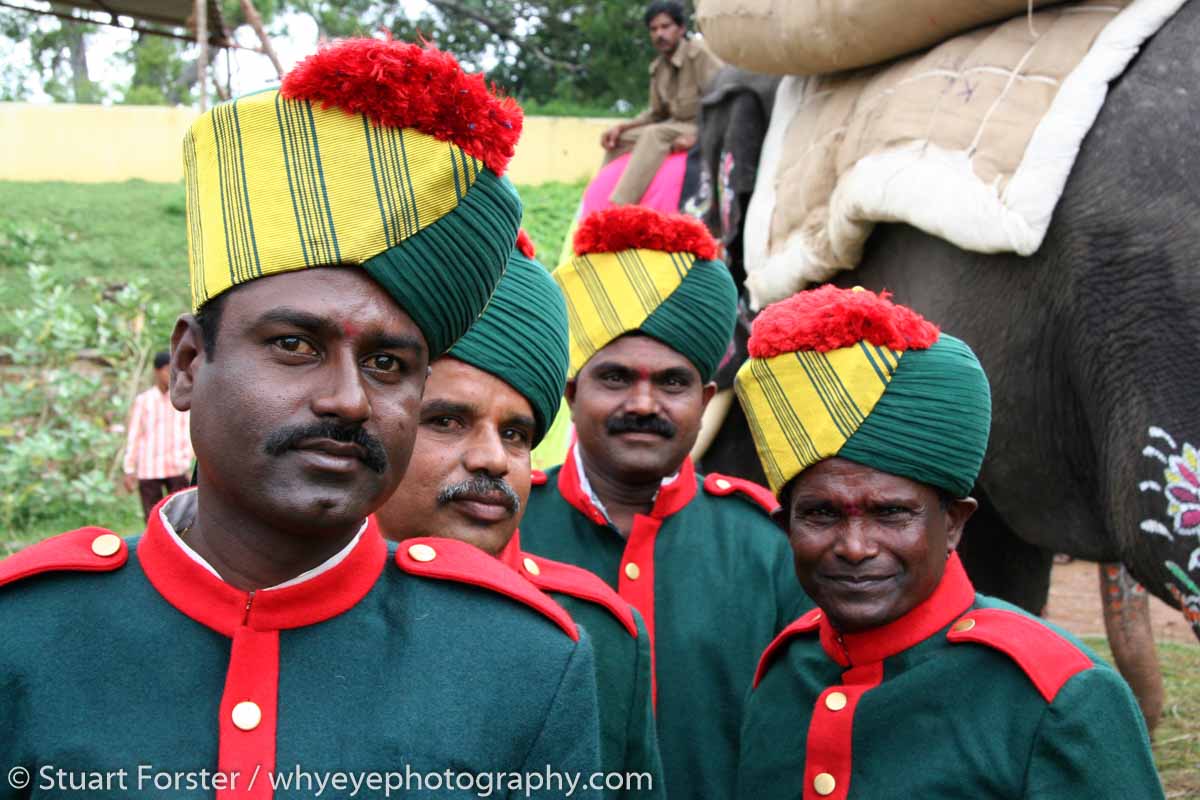
Mysore is by no means the only Indian city to celebrate the Dasara, which is known elsewhere under a variety of names, but nowhere else can claim to celebrate with such pomp and ceremony. To understand why, you need to look back over 400 years.
Royal associations with the Dasara started to evolve during the reign of Raja Wodeyar, who ascended to the throne of Mysore in 1610. Successive maharajas carried them on, gradually expanding the popular tradition of royal patronage for the celebrations.
The event began as a religious festival honouring the Hindu goddess Chamundeeswari’s defeat of the buffalo-headed demon Mashishasura. It became an opportunity for the maharajas of Mysore to show royal splendour—a form of propaganda displaying power and wealth.
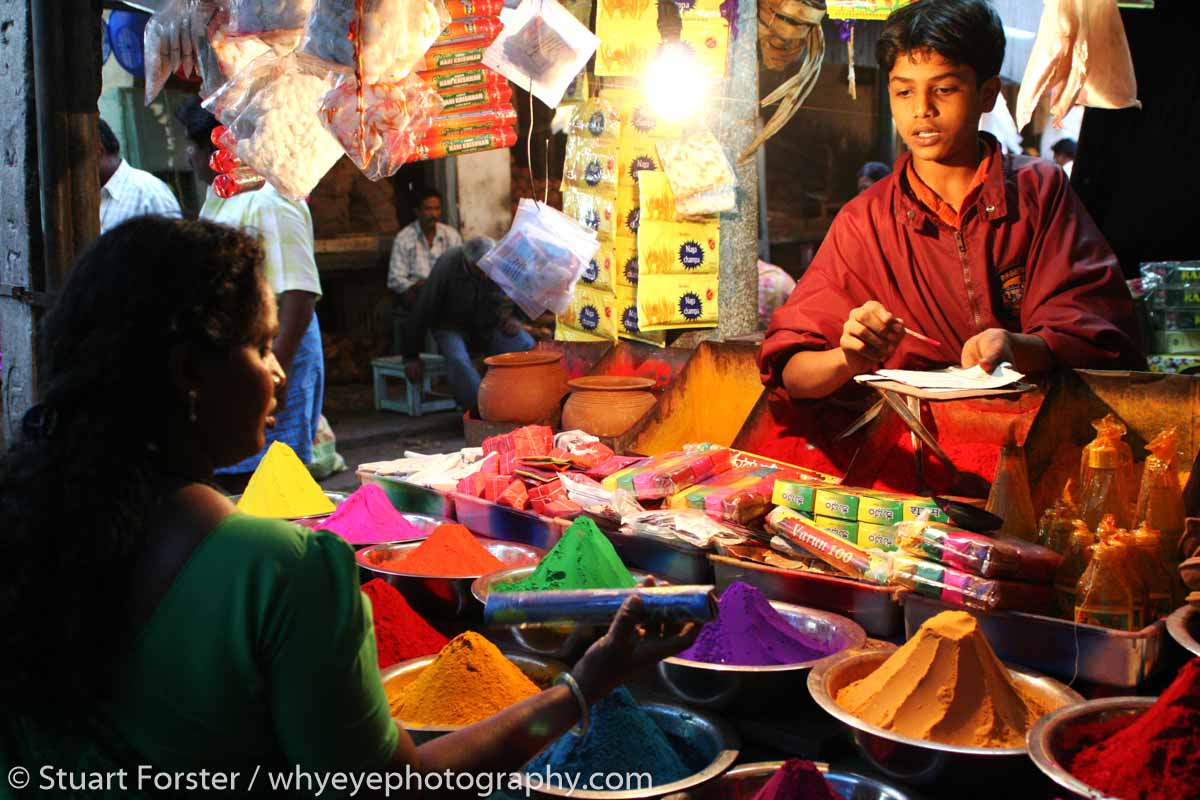
Now a deep-rooted tradition, the religious festival is also a celebration of the region’s performing and visual arts. For the first nine days of the Dasara the city hosts cultural performances by artists from across Karnataka. Concerts, musical and dramatic performances, plus exhibitions of visual artworks coincide with the Dasara as part of a state-sponsored arts festival, the Nadahabba.
The lead elephant in the Vijayadashami parade carries a golden howdah (saddle) on which an idol of the goddess Chamundeeswari is seated. Despite the limitations posed on the power of maharajahs and other royals in post-Independence India, the Mysore Dasara Festival is still, in every sense, a royal occasion. The descendants of the last Maharajah of Mysore appear at the event in the courtyard of what was once one of the family’s homes. Their patronage is still feted.
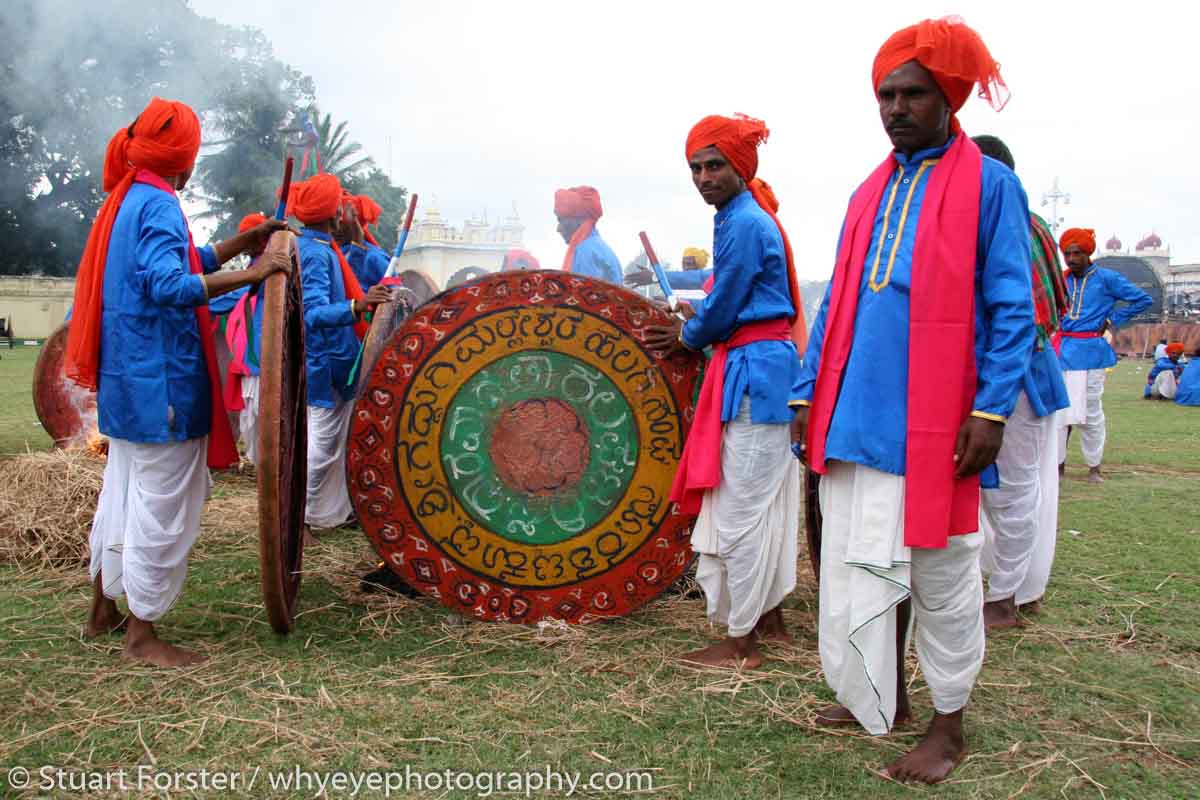
Chamundeeswari is not the only goddess venerated during the course of the Dasara’s ten days. On the sixth day pujas (ritual prayers) are dedicated to Saraswathi. On the eighth, Durga receives attention and, on the ninth, Lakshmi, the goddess of wealth, is honoured.
Religion and tradition combine to form a spectacular popular outpouring of celebrations. In addition to the programme of cultural activities, the Amba Vilas Palace is illuminated at night by 97,000 yellow-orange glowing light bulbs and fireworks explode in the sky after nightfall on the tenth day.
That use of light is by no means coincidence. The religious origin of the festival is regarded as a symbolic victory for truth and light over evil and darkness. Amba Vilas Palace becomes a beacon that draws people into its grounds. The atmosphere is relaxed and friendly. Nearby Chamundi Hill houses a temple dedicated to Chamundeeswari and a trip there affords a pleasant alternative view of the illuminated palace.
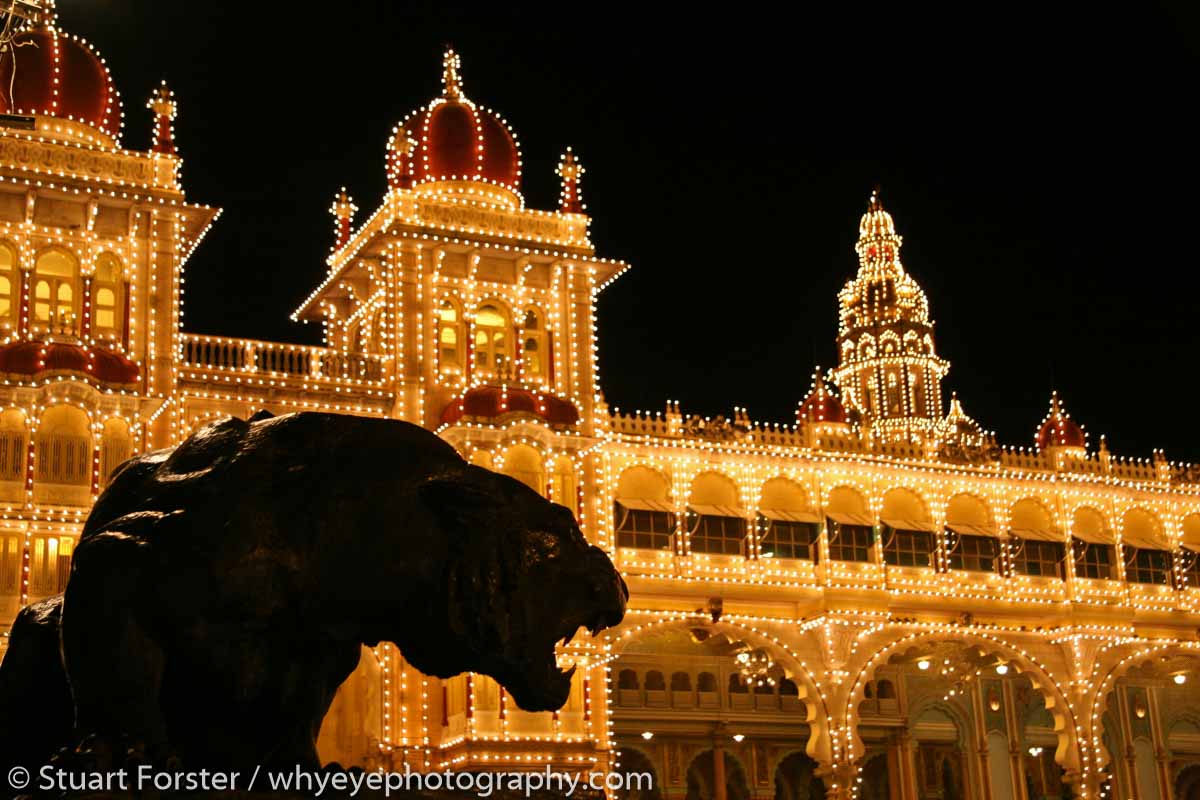
Spectators fortunate enough to gain access to the palace grounds on Vijayadashami Day will observe the gradual build up to the procession that involves mounted troops who carry their swords and lances high. Soldiers march in ceremonial uniforms and bands play. It harks back to a bygone age when soldiers, in their colourful uniforms, were regarded as dashing heroes.
After the elephants have been presented to the maharaja, who still has an apartment within the palace, a twenty-one gun salute rocks the gathered crowd. The elephants remain steady, despite the report of the guns. The boom announces to people gathered through the city that the procession is about to get underway.
Traditional dancers, drummers and musicians follow the elephants through the palace gates into the streets of Mysore. Performances are given on the move. Drummers beat out rhythms on the jaggahalige, a drum of painted buffalo hide stretched over the wheel of a bullock cart.
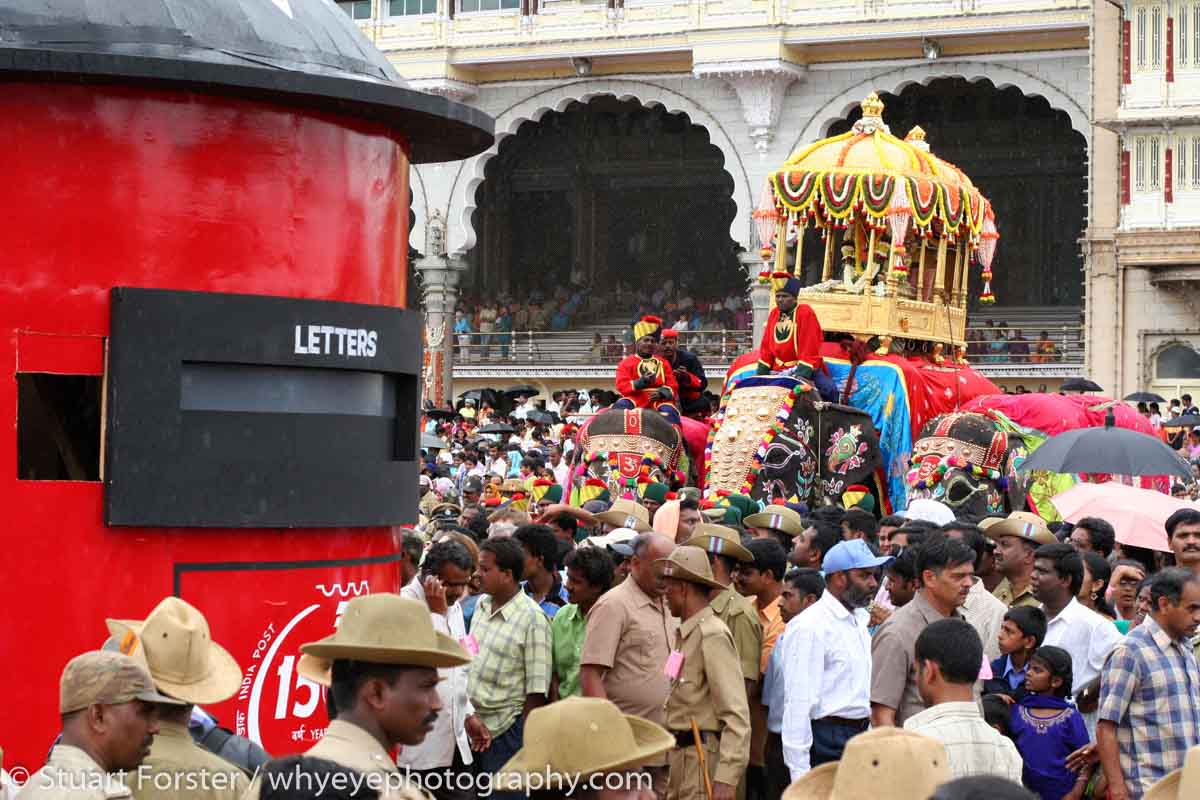
Giant Garudi puppets, reminiscent of the figures that participate in Mardi Gras celebrations in New Orleans, make their way along the route. Floats representing Karnataka’s heritage and diversity show cultural scenes and involve tribal groups from around the state.
They head towards the Mysore’s Bannimantap Ground, where a torch lit parade precedes the fireworks display that marks the end of the annual Mysore Dasara festivities.
Visually impressive, Mysore’s Vijayadashami procession Dasara yields chances for visitors to snap outstanding holiday photos and to immerse themselves in the region’s heritage.
Tell me more about visiting Mysore and the Mysore Dasara Fesitval.
Take a look at the Visit Karnataka website to find out more about Mysore and the Indian state in which it is located.
The Incredible India! website holds a wealth of inspiring information on the country as a whole.
Tickets are required to enter the grounds of Mysore Palace on the final day of Dasara festivities. If you want to enjoy a detailed view the preparations and start of the Vijayadashami procession then having a ticket is highly worthwhile.
Don’t miss this when you’re visiting Mysore Dasara
Take a look at Nandi the bull, a statue and Hindu place of worship on Chamundi Hill.
At night Brindavan Garden is a popular attraction. The dancing fountains prove popular with locals.
Anyone interested in military history should take a look at Srirangapatna, where Arthur Wellesley (later the Duke of Wellington) led British forces to victory over Tipu Sultan and his army.
What to eat when visiting Mysore Dasara
Locals say that Mysore Pak is a must try sweet, especially during festivals. It can be found at numerous outlets throughout the city. A cluster of sweet stalls are located around Davaraja Urs Market. Guru Sweet Mart is one of the most popular sweet shops in the city.
Hotel RRR, an inexpensive restaurant near Gandhi Square, is popular with locals and a good place to try biriyani. Be warned, the delicious portions are generous, resembling small mountains, and account for the popularity of this place.
Where to stay in Mysore Dasara
The Fortune JP Palace hotel is a chic heritage hotel in a former Mysore palace. The upscale hotel has modern interiors.
How to get to Mysore Dasara
British Airways flies from London Heathrow to Bangalore, via Mumbai, in conjunction with Jet Airways.
Privately driven cars represent the quickest means of travelling from Kempegowda International Airport, in Bangalore, to central Mysore.

